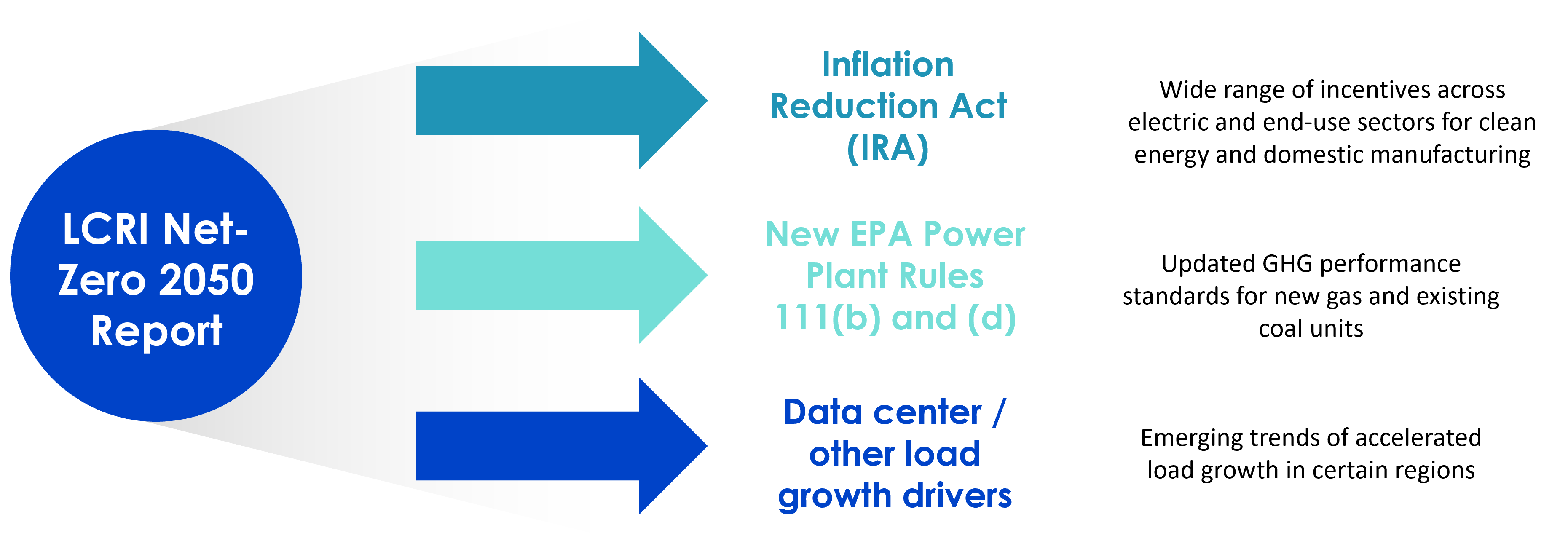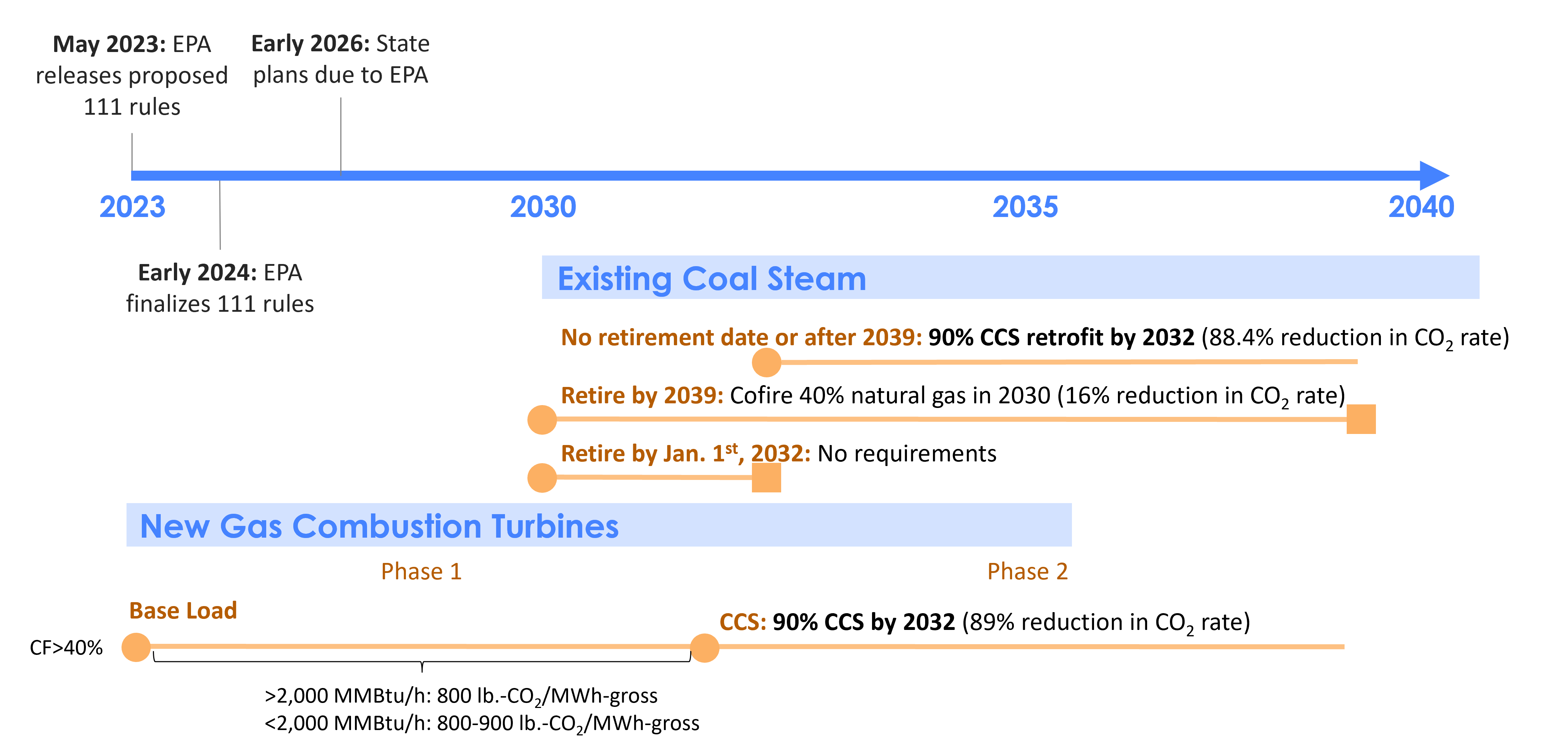Modeling Updates
The analysis in this study uses EPRI's US-REGEN model, an energy-economy system model with a detailed representation of electric, non-electric fuels, and end-use sectors. The Net-Zero 2.0 scenarios presented in the 2024 update reflect a range of updates to the model relative to the scenarios in the original report. The major changes are shown in Figure 1 and summarized here.

Inflation Reduction Act (IRA)
The IRA, enacted by the U.S. Congress in 2022, includes a wide range of incentives for clean energy deployment, in some cases expanding existing credits and in others creating entirely new ones. The scenarios modeled here include major IRA provisions, in particular:
- Clean electricity production credit for new zero-carbon generation (45Y)
- Existing nuclear production credit (45U)
- Clean electricity investment credit for capacity additions of zero-carbon generation and storage (48E)
- Captured carbon credit for CO2 capture, storage, and utilization (45Q)
- Clean fuels production credit for production of low-carbon fuels (45Z)
- Clean hydrogen production credit for production of low-carbon hydrogen (45V)
A more detailed description of the specific incentives and rules for each credit is available in EPRI's Back Pocket Insight: Inflation Reduction Act (IRA) Summary. An analysis of alternative scenarios for the clean hydrogen production credit can be found in EPRI's white paper on 45V impacts. The scenarios in this analysis are based on the December 2023 proposed implementation rules for 45V.
U.S. Environmental Protection Agency (EPA) Performance Standards
In 2024, EPA issued updated rules for Clean Air Act (CAA) Section 111(b) and (d) CO2 intensity performance standards for new and existing power plants, respectively. The updated rules (as specified at the time of publication in December 2024) place additional requirements on existing coal generation and new gas-fired generation. The scenarios modeled here include simplified constraints designed to approximate the complex rules. Essentially, existing coal capacity can only remain online after 2032 with at least 40% co-firing with natural gas and can only remain online after 2039 with 90% CO2 capture and storage (CCS) (or other measures to achieve an equivalent rate-based standard). New gas-fired capacity, starting in 2032, can only run higher than a 40% annual capacity factor with an emissions rate equivalent to 90% CCS. New gas-fired capacity operating at or below a 40% capacity factor are not affected by the rules. These constraints are summarized in Figure 2. A more in-depth analysis of an earlier version of the power plant rules is available in 3002030052.

Data Center Load
In recent years, data center (DC) activity has increased rapidly with the emergence of artificial intelligence (AI) applications, cryptocurrency, content streaming, and other data-intensive digital services. While future growth trends are highly uncertain, electricity demand for data centers is poised to become a significant component of load, especially for the regions where DC investment is concentrated. EPRI research has developed updated estimates of current state-level DC load in the U.S. and a range of projected future load, summarized in the Powering Intelligence and Powering Data Centers white papers. The scenarios modeled here include these updated estimates.
Technology Characterization
The scenarios modeled here include several updates to the representation of key low-carbon technologies based on LCRI research over the past two years. These include:
- Hydrogen production from electrolysis (3002026205)
- Hydrogen storage and infrastructure (3002028358, 3002028847)
- CO2 capture technologies (3002026704, 3002031229)
- Geologic CO2 storage (3002027775)
- Biofuel production technologies (3002027971)
- Criteria pollutant emissions (3002028545)
- Water consumption and withdrawal (3002028118)
More details of updated assumptions are available in the model documentation for US-REGEN. For several of these technologies, this report includes sensitivity cases highlighting the impact of alternative or uncertain assumptions. These cases are described in the next section.